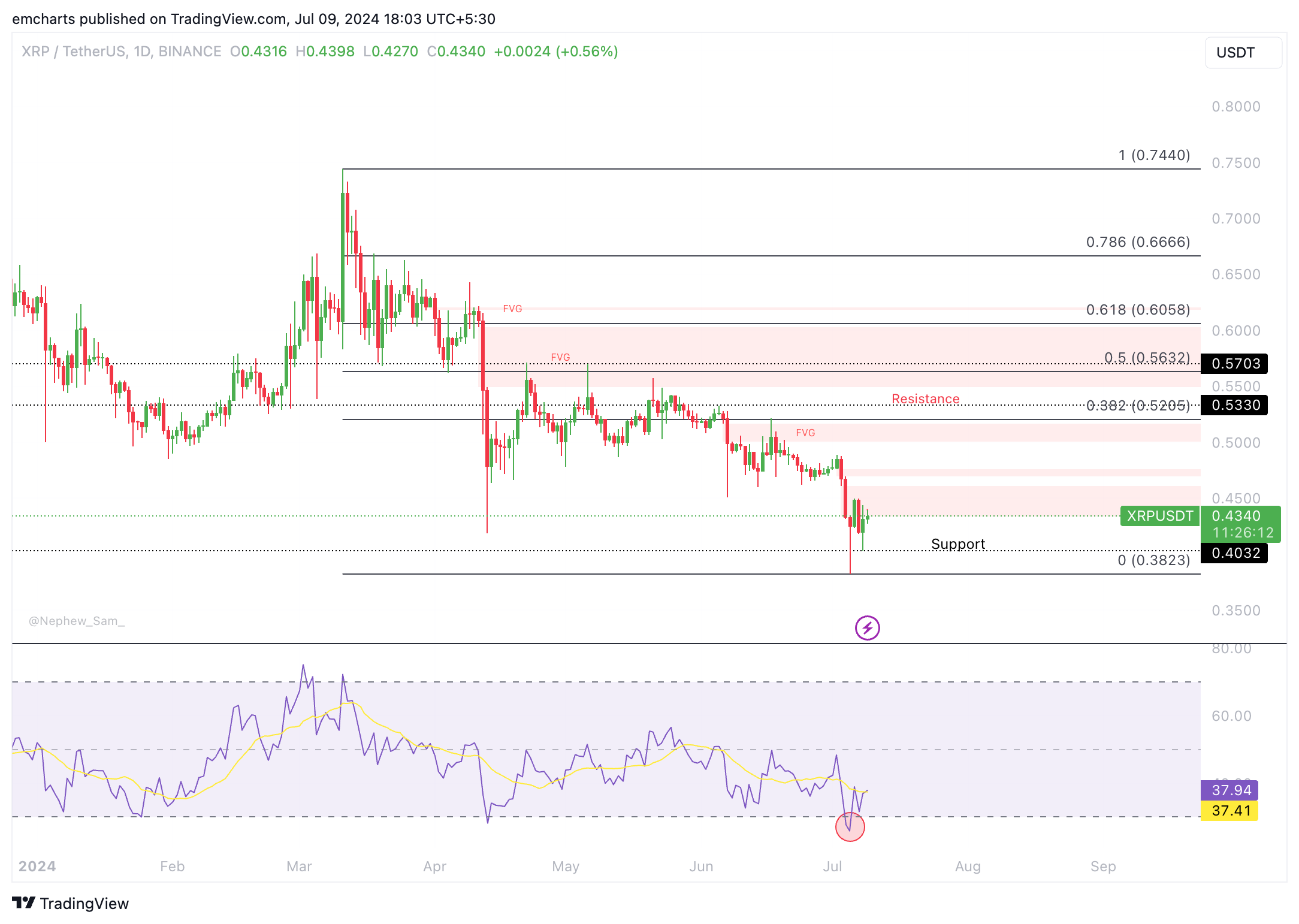Ripple active addresses climb 30% overnight, XRP hovers around $0.43
- Ripple active addresses climbed over 30% on Tuesday, per Santiment data.
- XRP traders await the end of the SEC’s lawsuit against Ripple, expected by July 31.
- Ripple investors realized over $144 million in losses in July.
- XRP hovers around $0.43 on Tuesday, adding nearly 1% value to the altcoin.
Ripple (XRP) on-chain activity shows an increase in activity among XRP traders. The number of active traders increased on Tuesday, meaning XRP is gaining relevance among market participants.
With Bitcoin back above $57,000, there is optimism among traders. Pro-crypto attorney Fred Rispoli told followers on X that the US Securities and Exchange Commission (SEC) vs. Ripple lawsuit is likely to end in July 2024. XRP traders are likely watching lawsuit developments and overall sentiment among crypto traders for clues on where the altcoin is headed.
Daily digest market movers: Ripple’s address activity rises, price recovers
- Ripple noted a 30% increase in active addresses in a single day, to 22,256 on Tuesday, as seen on Santiment.
- The rise in active addresses is indicative of an increase in the asset’s relevance among traders and higher demand across exchange platforms.
 [15.42.25, 09 Jul, 2024]-638561271213425465.png)
XRP active addresses
- The Network Realized Profit/Loss metric (NPL) from Santiment crypto intelligence tracker shows that traders have realized over $144 million in losses in July. This could be a sign of capitulation among traders, meaning the altcoin could soon recover from the recent decline in its price.
- The consistent negative spikes in the NPL metric indicate the losses incurred by XRP traders.
 [15.43.30, 09 Jul, 2024]-638561271464220421.png)
XRP NPL vs. price
- XRP traders are awaiting the end of the SEC vs. Ripple lawsuit, and per Attorney Fred Rispoli, this is likely before the end of July 2024. SEC vs. Ripple lawsuit ruling could come out as early as July 13, according to this pro-crypto attorney
Technical Analysis: XRP hovers around $0.43 on Tuesday
Ripple recovered from its decline to the 2024 low of $0.3823 hit on July 5. The altcoin is hovering close to $0.43 on Tuesday. The Relative Strength Index (RSI) on the XRP/USDT daily chart shows that Ripple is out of the oversold zone.
The RSI dipped under 30 on Friday, July 5. Since then, the RSI indicator has climbed to 37.89, signaling strength in Ripple’s uptrend.
XRP could climb to the upper boundary of the Fair Value Gap at $0.4611, as seen in the chart below. The altcoin faces resistance at the psychologically important $0.50 level.

XRP/USDT daily chart
A daily candlestick close below support at $0.4032 could invalidate the bullish thesis and send XRP to retest the July 5 low of $0.3823.
Bitcoin, altcoins, stablecoins FAQs
Bitcoin is the largest cryptocurrency by market capitalization, a virtual currency designed to serve as money. This form of payment cannot be controlled by any one person, group, or entity, which eliminates the need for third-party participation during financial transactions.
Altcoins are any cryptocurrency apart from Bitcoin, but some also regard Ethereum as a non-altcoin because it is from these two cryptocurrencies that forking happens. If this is true, then Litecoin is the first altcoin, forked from the Bitcoin protocol and, therefore, an “improved” version of it.
Stablecoins are cryptocurrencies designed to have a stable price, with their value backed by a reserve of the asset it represents. To achieve this, the value of any one stablecoin is pegged to a commodity or financial instrument, such as the US Dollar (USD), with its supply regulated by an algorithm or demand. The main goal of stablecoins is to provide an on/off-ramp for investors willing to trade and invest in cryptocurrencies. Stablecoins also allow investors to store value since cryptocurrencies, in general, are subject to volatility.
Bitcoin dominance is the ratio of Bitcoin's market capitalization to the total market capitalization of all cryptocurrencies combined. It provides a clear picture of Bitcoin’s interest among investors. A high BTC dominance typically happens before and during a bull run, in which investors resort to investing in relatively stable and high market capitalization cryptocurrency like Bitcoin. A drop in BTC dominance usually means that investors are moving their capital and/or profits to altcoins in a quest for higher returns, which usually triggers an explosion of altcoin rallies.

